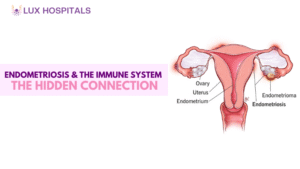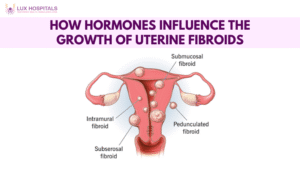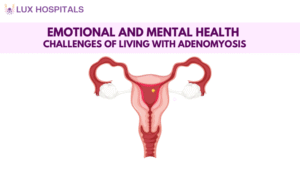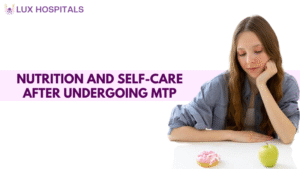Hysterectomy for Fibroids: Is It the Right Choice for You?
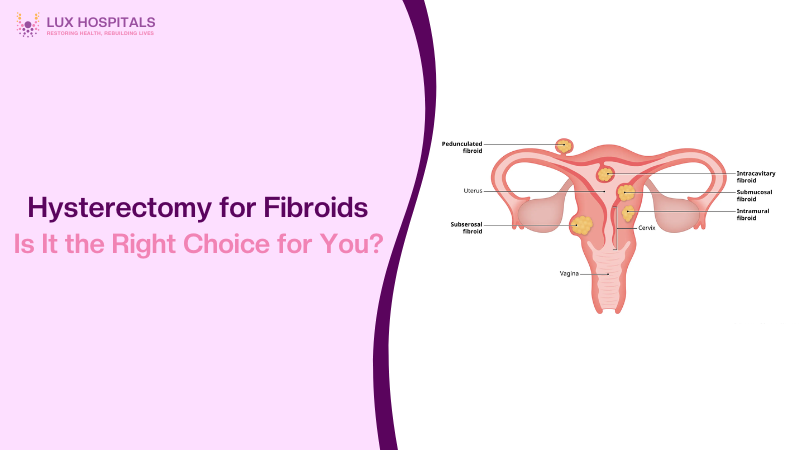
Non-cancerous growths called uterine fibroids appear in or on a woman’s uterus. While many fibroids don’t cause symptoms, some can lead to heavy bleeding, pelvic pain, or fertility issues. One of the most definitive treatments for fibroids is a hysterectomy for fibroids. But is it the right choice for you?
Let’s explore what a hysterectomy for fibroids means, its pros and cons, and whether it’s the right decision for your health and lifestyle.
What Are Uterine Fibroids?
Uterine fibroids, or leiomyomas, are benign tumors of muscle and fibrous tissue that can vary in size and number and occur during childbearing years.
Many women with fibroids don’t experience symptoms, but when they do, they may include
- Heavy menstrual bleeding
- Prolonged periods
- Pelvic pain or pressure
- Frequent urination
- Constipation
- Pain during intercourse
The intensity of your symptoms, your age, and whether you want children in the future determine the course of treatment.
What Is a Hysterectomy?
A hysterectomy for fibroids involves the surgical removal of the uterus to permanently eliminate fibroids and their symptoms. Types of hysterectomy include:
- Total hysterectomy: Removes the uterus and cervix
- Subtotal (partial) hysterectomy: Removes the uterus but leaves the cervix
- Radical hysterectomy: Removes uterus, cervix, part of the vagina, and surrounding tissues (rarely used for fibroids)
The fallopian tubes and ovaries may also be removed in some situations.
When Is Hysterectomy Recommended for Fibroids?
A hysterectomy for fibroids is usually recommended when:
- Fibroids cause severe symptoms that are unresponsive to other treatments
- There’s excessive bleeding leading to anemia
- The fibroids are rapidly growing
- You don’t plan to have children in the future
- Other therapies have failed or aren’t suitable
It’s a permanent solution to fibroids because fibroids cannot return after the uterus is removed.
Pros and Cons of Hysterectomy for Fibroids
Pros:
- Permanent relief from fibroid-related symptoms
- No risk of fibroid recurrence
- Can improve quality of life
- It may resolve other uterine conditions (like endometriosis)
Cons:
- Irreversible—you can’t become pregnant
- Surgical risks: infection, bleeding, reactions to anesthesia
- Long recovery (up to 6–8 weeks for abdominal surgery)
- Possible hormonal changes if ovaries are removed
A hysterectomy for fibroids offers a clean break from painful symptoms but comes with permanent consequences.
Is a Hysterectomy the Right Choice for Treating Fibroids?
Deciding whether a hysterectomy for fibroids is right for you depends on:
- The severity of your symptoms
- Your age and desire for children
- Your experience with other treatments
- Your lifestyle, health goals, and doctor’s advice
A hysterectomy for fibroids may provide the long-term relief you require if you’ve exhausted all other choices and are still experiencing pelvic pain or recurrent bleeding. But it’s crucial to comprehend its long-term impacts completely.
Conclusion
Choosing a hysterectomy for fibroids is a big step, but for many women, it can be life-changing. This procedure could provide you with long-lasting peace of mind if you no longer want children and fibroids interfering with your day-to-day activities. On the other hand, start with less intrusive treatments if you’re younger or wish to maintain your fertility. Ask questions of your gynecologist, and don’t be afraid to get a second opinion. The proper choice will fit your goals, the future, and your body. Choosing a hysterectomy for fibroids is personal and based on many factors.
Frequently Asked Questions
No other treatments like myomectomy, UFE, and medications are available. These options can manage symptoms while preserving your uterus. A hysterectomy for fibroids is a final, permanent solution.
Risks include bleeding, infection, and organ injury during surgery. There may also be emotional or hormonal effects afterward. Discuss all risks with your doctor before choosing surgery.
Recovery depends on the surgical method used. Usually, four to eight weeks are needed to return to regular activity. Less invasive methods may shorten recovery time.
Yes, because the uterus is removed, fibroids cannot return. It offers a permanent cure for fibroid symptoms. This is why many consider a hysterectomy for fibroids adequate.
Not unless your ovaries are also removed during surgery. If the ovaries stay, your hormones and periods may continue. Removing them causes immediate surgical menopause.
No, pregnancy is impossible without a uterus. Even with ovaries intact, the womb is essential for gestation. A hysterectomy for fibroids ends fertility permanently.
There will be pain after surgery, but it’s manageable with medication. Pain decreases each day, especially after the first week. Most women feel better within a few weeks.

















